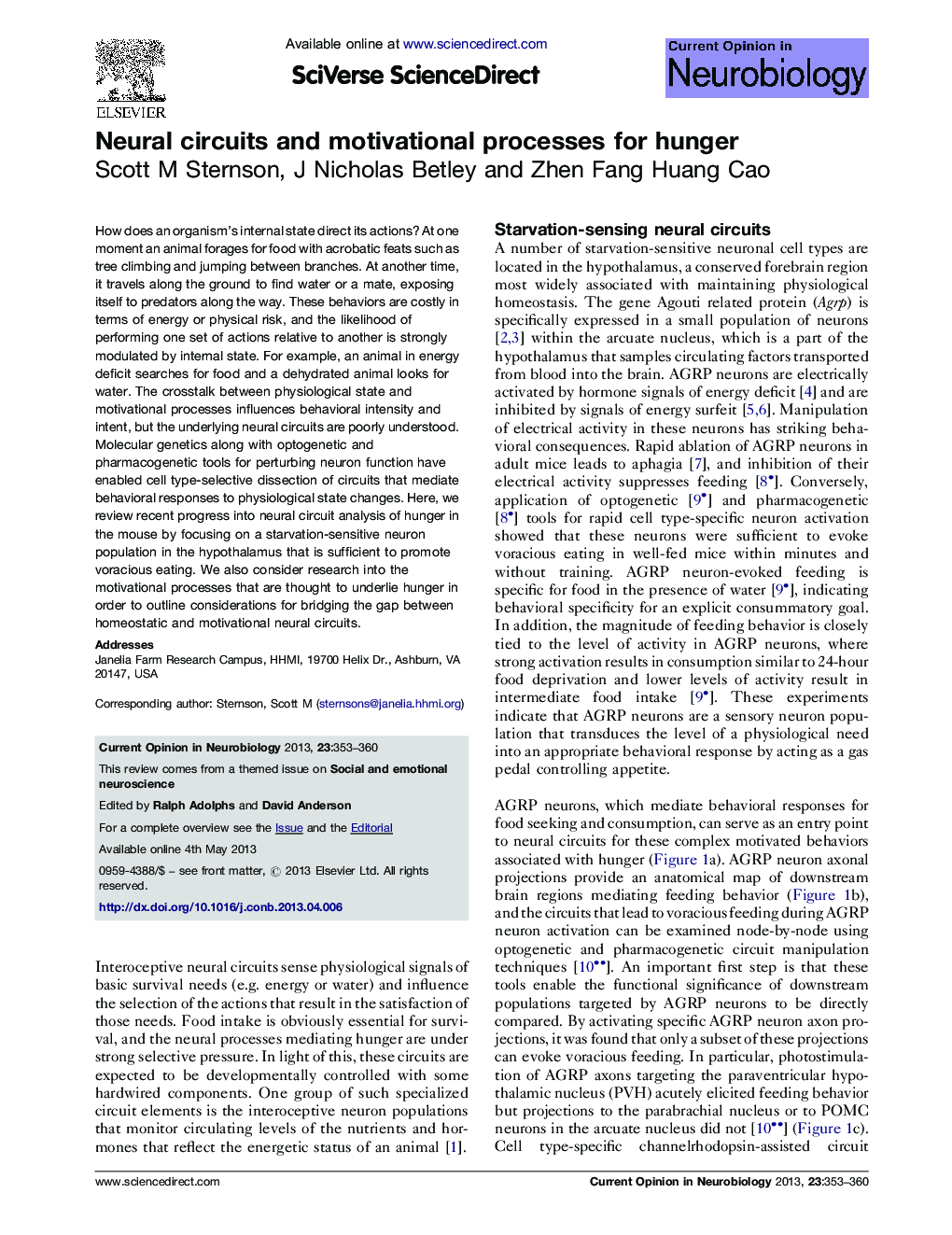| Article ID | Journal | Published Year | Pages | File Type |
|---|---|---|---|---|
| 6267171 | Current Opinion in Neurobiology | 2013 | 8 Pages |
â¢Recent advances in genetically encoded tools permit neuronal entry point into hunger circuits.â¢AGRP neurons are sensory neuron entry points to motivational circuits.â¢Multiple motivational processes are engaged during hunger.â¢Future work will deconstruct distinct motivational mechanisms mediated by specific hunger circuits.
How does an organism's internal state direct its actions? At one moment an animal forages for food with acrobatic feats such as tree climbing and jumping between branches. At another time, it travels along the ground to find water or a mate, exposing itself to predators along the way. These behaviors are costly in terms of energy or physical risk, and the likelihood of performing one set of actions relative to another is strongly modulated by internal state. For example, an animal in energy deficit searches for food and a dehydrated animal looks for water. The crosstalk between physiological state and motivational processes influences behavioral intensity and intent, but the underlying neural circuits are poorly understood. Molecular genetics along with optogenetic and pharmacogenetic tools for perturbing neuron function have enabled cell type-selective dissection of circuits that mediate behavioral responses to physiological state changes. Here, we review recent progress into neural circuit analysis of hunger in the mouse by focusing on a starvation-sensitive neuron population in the hypothalamus that is sufficient to promote voracious eating. We also consider research into the motivational processes that are thought to underlie hunger in order to outline considerations for bridging the gap between homeostatic and motivational neural circuits.
